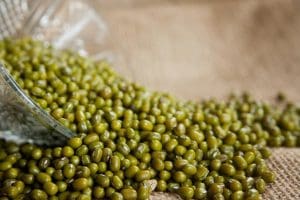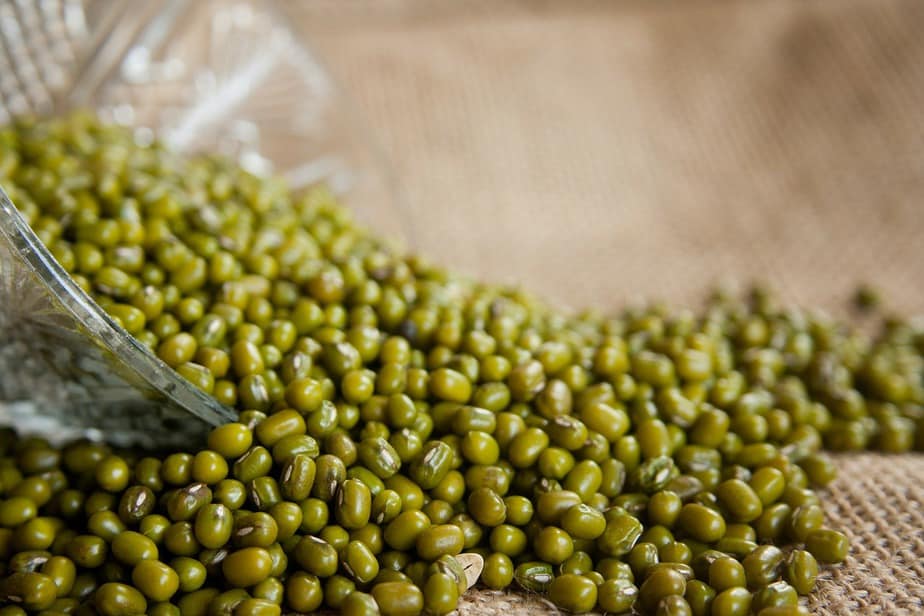It’s no secret that legumes are packed with health benefits. But when it comes to nutrients, one bean reigns supreme: mung bean. The green legume has long been part of a balanced diet in Asia, but just recently arrived on the scene in America, where it’s quickly becoming an undeniable superfood.
 Suddenly, mung bean rotini, vegan eggs using mung bean, mung bean protein powder and a variety of other products are touting this magic legume. And unlike some fads, this rise in popularity is a very good thing, because mung beans pack some serious health benefits.
Suddenly, mung bean rotini, vegan eggs using mung bean, mung bean protein powder and a variety of other products are touting this magic legume. And unlike some fads, this rise in popularity is a very good thing, because mung beans pack some serious health benefits.
If the only kind of mung bean you’ve ever eaten is in the bean sprout form, it’s time to expand your horizons—and your health benefits—by working this legume into your diet today.
What are mung beans?
Mung beans are green legumes that you can find whole, split or as sprouts. These cousins of the lentil are mainly grown (and featured in diets) in India, Pakistan, Nepal, China, Bangladesh and other parts of Southeast Asia.
Mung beans have long been central to the Ayurvedic diet, which stresses how easy they are to digest. But more than just eaten widely, mung beans are practically cherished in Ayurveda for their healing properties. Along with daal (lentils), legumes have been a dietary staple for thousands of years among yogis, monks and other healers in India.
Mung beans are also a clear favorite of dieticians, who love their low calories and high fiber content, and doctors, who often prescribe them as an ideal post-illness food. A one-cup serving of mung beans contains just 100 calories but 7.7 grams of fiber—with no sodium.
Health benefits of mung beans
Like turmeric, another Indian ingredient on the 2018 superfood list, mung beans have long been studied for their health benefits. Studies show that mung beans can help prevent insulin resistance and fat accumulation—helping ward off metabolic syndrome and regulate blood sugar. But the benefits of mung don’t stop there.
Like most legumes, mung beans are high in resistant starch, which passes through the digestive tract unchanged and brings a host of health benefits. Resistant starch can reduce your body’s pH levels, cut down on inflammation and do wonders for your colon.
Mung beans are packed with nutrients. One serving alone can help you meet your daily quota of folic acid, magnesium, potassium, zinc, and vitamins A, B, C, D, E and K. We need magnesium to repair muscles after tough workouts. And did we mention mung beans are 24% protein?
How do you eat mung beans?
Like most legumes, mung beans have a relatively mild, sweet flavor. That means you can spice them up to accommodate a wide range of taste buds. Mung beans are traditionally slow cooked with ghee and plenty of spices. They’re also great for soups—cooked a lot like lentils, with plenty of broth or water—and as sprouts on your salad.
If you buy mung beans dry—their most common form—then you’ll need to soak them overnight in water. Once you do that and rinse, there’s no shortage of ways to transform these legumes into a healthy, filling meal. Here are a few ways you can prepare mung beans.
- Sprout them: Many cooks sprout mung beans at home. But if this recipe overwhelms you, don’t worry. You can also purchase mung beans that are already fully sprouted, which makes them an easy addition to salads, pastas and soups like pho.
- Make mung soup: Like lentils, mung beans are great for soup. Try following this recipe, and add spices as your taste buds prefer. Or if you don’t have time to boil them on the stove top, try cooking them with plenty of liquid in your pressure cooker.
- Get creative: Not into sprouts or soup? Try swapping out chickpeas for mung beans in your hummus, or ground dried mung beans into flour and transform it into a healthier pancake. Still not excited? Check out these mung bean recipes for tacos, soups and more.
Mung beans haven’t fully hit the mainstream yet, so your best bet for finding them is online, at specialty grocers like Whole Foods or, of course, at Indian markets. But given this legume’s high protein and fiber count and low calories, don’t be surprised if you start seeing more mung beans appearing on your plate at restaurants, cafes and even at home. If you’re struggling to hit your next weight loss milestone, mung beans might just be the filling yet healthy food you’ve been searching for.
I’m not just a supplement analyst. I’m an extremely qualified one! I am a Certified Nutrition Coach (CNC) and actually received my certification directly from the National Academy of Sports Medicine. I am also a Nutrition & Wellness Consultant, certified by the American Fitness Professionals Association (AFPA).


